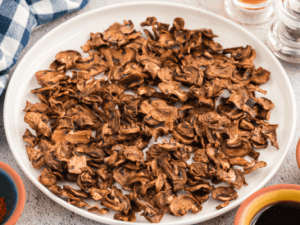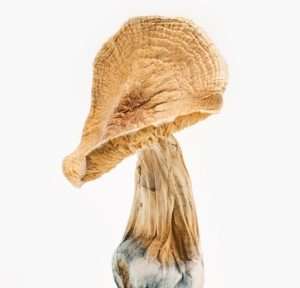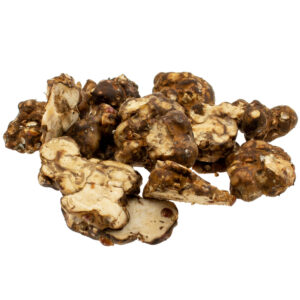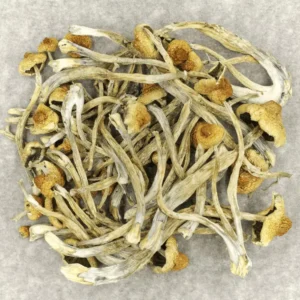How long do dehydrated mushrooms last?

-
- Buy Dehydrated Mushrooms online :
Power of Dehydrated Mushrooms: Health Benefits and Culinary Uses
As a passionate food lover and home cook, I’m always on the lookout for new ingredients to elevate my culinary creations. Recently, dehydrated mushrooms have captured my interest. Also known as dried mushrooms, they are a fantastic addition to any kitchen pantry. These mushrooms offer a concentrated burst of flavor, a unique texture, and a myriad of health benefits. In this article, we’ll explore the world of dehydrated mushrooms, delving into their health benefits, nutritional value, culinary uses, and more.
Dehydrated Mushrooms Health Benefits
Dehydrated mushrooms are not only a flavorful addition to your dishes but also a powerhouse of nutrition. These mushrooms are packed with essential vitamins, minerals, and antioxidants that can significantly enhance your overall well-being. One of the standout health benefits of dehydrated mushrooms is their immune-boosting properties. They contain beta-glucan, a compound known to enhance immune cell activity and strengthen the body’s defense against infections and diseases.
Moreover, dehydrated mushrooms are an excellent source of dietary fiber, which aids digestion and supports a healthy gut. They are also rich in potassium, a vital mineral for regulating blood pressure and promoting heart health. Additionally, dehydrated mushrooms are low in calories and fat, making them an ideal choice for those mindful of their weight or following a healthy eating plan.
Dehydrated Mushrooms
Dehydrated Mushrooms Nutritional Value
Dehydrated mushrooms are a nutritional powerhouse, brimming with essential vitamins and minerals. These mushrooms are particularly rich in B vitamins, including riboflavin, niacin, and pantothenic acid, which play crucial roles in energy production, brain function, and the formation of red blood cells. They are also an excellent source of minerals such as potassium, phosphorus, and copper.
Moreover, dehydrated mushrooms are packed with antioxidants like selenium and ergothioneine. These antioxidants help protect your cells from damage caused by free radicals and oxidative stress, reducing the risk of chronic diseases such as cancer and heart disease. The drying process also concentrates the flavor of the mushrooms, intensifying their umami taste and making them a versatile ingredient in various culinary preparations.
Culinary Magic With Dehydrated Mushrooms
Unlock the hidden potential of your kitchen with dehydrated mushrooms, the ultimate flavor enhancer. These little gems pack a punch, offering a concentrated taste that can transform any dish. Perfect for recipes that call for a robust mushroom flavor, dehydrated mushrooms are a fantastic alternative to fresh ones. Simply soak them in warm water or broth to bring them back to life, and you’ll have plump, flavorful mushrooms ready to elevate your culinary creations.
But the magic doesn’t stop there. Dehydrated mushrooms are incredibly versatile. Grind them into a fine powder to create a unique seasoning or flavor booster for sauces, marinades, and even desserts. Their rich, earthy umami can add a savory depth to vegetarian and vegan dishes, making them taste delightfully meaty. Whether you’re a professional chef or a home cook looking to experiment, dehydrated mushrooms are a must-have in your pantry. They promise to take your dishes to new, delicious heights.
How to Dehydrate Mushrooms & Mushroom Powder:
Making mushroom powder and dehydrating them is an excellent way to preserve the nutritional value and flavor of mushrooms. This step-by-step tutorial will help you get through the process.
Why dehydrate mushrooms?
Dehydrating mushrooms increases their shelf-life and intensifies their flavor. Mushroom powder is a great seasoning that adds a rich umami flavor to many dishes.
What you’ll need:
- Fresh mushrooms of any variety
- Dehydrator or oven?
- Food processors or coffee grinders
- Airtight containers for storage
How to dehydrate mushrooms:
- Clean up the Mushrooms
- To remove dirt, gently wipe the mushrooms down with a damp cloth. They can absorb water if you soak them.
- Slice Mushrooms
- Cut the mushrooms into slices of about 1/4 inch thickness. Uniform slices ensure even drying.
- Arrange on Trays for Dehydrator
- Place the mushrooms in one layer on the dehydrator tray. Make sure they don’t overlap.
- Dehydrate:
- Set the dehydrator at 125degF and leave it running for 6-8hrs. The mushrooms should be checked periodically until they are completely dried and brittle.
- Use an Oven If you do not have a dehydrator you can use your oven. Set the oven to the lowest setting (normally around 65degC or 150degF) and put the mushrooms onto a baking tray. Keep the oven door open a little to let moisture escape. The drying time can vary, but is usually 6-8 hours.
- Cool Store
- Let the mushrooms cool down completely after drying. They should be stored in an airtight container in a dark, cool place.
Making Mushroom powder:
- Grind Dried Mushrooms
- Put the dried mushrooms into a food processor. Pulse the mushrooms until they are finely powdered.
- Store Powder
- Transfer the powder into an airtight container. To maintain the potency, store in a dark and cool place.
Mushroom powder uses:
- Seasoning : Add this to sauces, soups, gravies, and stews for a rich umami taste.
- Smoothies Boost your smoothie’s nutritional value.
- Baking : Add to bread, pasta or pizza dough as a flavor enhancer.
Follow these simple steps to enjoy mushrooms all year round. Making mushroom powder and dehydrating them is an easy process that increases the nutritional value of this ingredient.
How do i Use Dehydrated Mushrooms
Incorporating dehydrated mushrooms into your daily meals is simpler than you might think. Start by rehydrating them: place the desired amount in a bowl and cover with warm water or broth. Let them soak for 20 to 30 minutes until they soften and plump up. Once rehydrated, drain the mushrooms, but don’t discard the liquid—it’s a flavorful broth that can enhance your recipes.
With your mushrooms ready, the culinary possibilities are endless. Add them to soups, sauces, and stews for a rich mushroom flavor. They work wonders in a creamy mushroom risotto or a hearty mushroom and barley soup. For a quick weeknight dinner, sauté rehydrated mushrooms with garlic and herbs, then toss them with pasta or use them as a topping for pizzas and bruschetta. Enjoy the depth and complexity they bring to your dishes!
Best Dehydrated Mushrooms Recipe
Now that you’re familiar with using dehydrated mushrooms in everyday cooking, let’s dive into some standout recipes that highlight their unique flavor and versatility. These dishes are sure to impress your family and friends, quickly becoming staples in your culinary repertoire.
**Mushroom and Thyme Risotto**: This creamy, comforting risotto is a fantastic way to showcase the earthy flavor of dehydrated mushrooms. Rehydrate the mushrooms and sauté them with onions and garlic before adding Arborio rice and vegetable broth. Finish with a sprinkle of fresh thyme and grated Parmesan cheese for an indulgent dish.
**Mushroom and Lentil Shepherd’s Pie**: For a hearty and nutritious vegetarian meal, try this twist on a classic shepherd’s pie. Sauté rehydrated mushrooms with onions, carrots, and lentils, then top with a layer of creamy mashed potatoes. Bake until golden and bubbly, and serve with a side of sautéed greens for a complete meal.
**Mushroom and Goat Cheese Bruschetta**: Elevate your appetizer game with these delicious mushroom and goat cheese bruschetta. Sauté rehydrated mushrooms with shallots and thyme until golden brown. Spread creamy goat cheese on toasted baguette slices and top with the sautéed mushrooms. Finish with a sprinkle of fresh parsley and a drizzle of balsamic glaze.
These recipes not only highlight the rich, umami flavor of dehydrated mushrooms but also demonstrate their versatility in various dishes. Enjoy experimenting and creating new favorites!
Storing and Rehydrating Dehydrated Mushrooms
To preserve the quality and flavor of dehydrated mushrooms, proper storage is key. Store them in an airtight container in a cool, dry place away from direct sunlight. This prevents moisture absorption and keeps them crisp. When stored correctly, dehydrated mushrooms can last up to a year.
For rehydration, follow these tips to ensure the best texture and flavor:
- Use Warm Water or Broth: Always rehydrate mushrooms in warm water or broth. Hot liquids can make them rubbery.
- Be Patient: Allow enough time for the mushrooms to fully rehydrate, which can take 20 to 30 minutes depending on their size and thickness.
- Save the Liquid: The rehydration liquid is packed with flavor. Use it as a base for soups, sauces, or a savory broth for cooking grains.
By following these steps, you can enjoy the rich, earthy flavor of dehydrated mushrooms in your dishes while maintaining their quality .
Where to Buy Quality Dehydrated Mushrooms
Now that you are eager to experiment dehydrated mushrooms in your kitchen, you may be wondering where to find high-quality mushrooms. While you may be able to find them in some grocery stores puffy shrooms, your best bet is to search for specialty stores or online retailers that specialize in gourmet ingredients. Search for reputable sources that offer a wide variety of dehydrated mushrooms and ensure that they are ethically sourced and of the highest quality.
Dehydrated Mushrooms vs. Fresh Mushrooms: A Comparison






Reviews
There are no reviews yet.